Synkromystic
Rising Star
These experiments are to document an attempt at a reduction of dmt-oxide using zinc powder and hcl. **An assumption has been made that the sample contains at least a small amount of Dmt-oxide.
The dmt is from Mimosa Hostilis. It was collected from a Freeze precipitation of Crown Naphtha from an A/B extraction. All pulls were mixed together.
Sample A – Original sample 2.5 grams. Kept as is, for a control
Sample B – Starting sample 2.5 grams. Dissolved in hcl/ water mix and based with Naoh. Pulled with very hot Bestine. Left to cool slowly and then freeze precipitated.
Sample C – Starting sample 2.5 grams. Reduction Sample. Dissolved in hcl/water mix. Zinc Added. Filtered and Based with Naoh. Pulled with very hot Bestine. Left to cool slowly and then freeze precipitated.
Sample D – Starting sample 2.5 grams. Dissolved in very hot Bestine. Freeze precipitated.
1st image - All the samples together. They are slightly waxy orange crystals for the most part.
2nd image - Sample B and C after dmt added to hot hcl/water solution.
3rd image - Zinc Reduction on Sample C
4th image - After zinc was filtered from Sample C
5th image - Immediately after adding Naoh to base. The camera is not the best, but Sample C is slightly whiter than Sample B
6th image - After pulling with hot bestine. Difficult to see, but Bestine is still in the Sample C jar. Sample D is on the left. C is in the middle. B on the right.
7th image - On sample C, the reduction sample, there was some residue leftover at the bottom of the jar after pulling with bestine. There is a picture attached, but it's rather difficult to see. The residue is very slightly greyish in color, but acts much more like dmt than zinc. It will not go into the bestine solution no matter how hot the bestine gets. **** Recently I have done a few different ''reductions'' on the same batch of orange dmt. This residue has occurred on each experiment. It will re-dissolve in an hcl solution, and will come out when based with naoh again, but it will not dissolve into bestine, or 90% ipa. It looks and acts like dmt with a slightly gray color.
A reaction clearly took place once the zinc was added to the warm mix of hcl/water and dmt. The solution went from dark orange to almost clear within a minute after the zinc was added.
Sample C, the reduction sample, has produced the most shiny clear crystals, and the least amount of impurity at the bottom ( I am assuming it is plant oils, or the reduction did not get completed 100%)
All samples were left to cool very slowly. Room temperature was reached after 4 hours, and then into fridge temperatures for about 2 hours. Then into the freezer for about 4. I have grown beautiful crystals doing this before, but maybe the solvent wasn't as saturated as it could be, so I had to freeze preicp to get most of the crystals out.
I cannot comment on the exact yield at this time.
The dmt is from Mimosa Hostilis. It was collected from a Freeze precipitation of Crown Naphtha from an A/B extraction. All pulls were mixed together.
Sample A – Original sample 2.5 grams. Kept as is, for a control
Sample B – Starting sample 2.5 grams. Dissolved in hcl/ water mix and based with Naoh. Pulled with very hot Bestine. Left to cool slowly and then freeze precipitated.
Sample C – Starting sample 2.5 grams. Reduction Sample. Dissolved in hcl/water mix. Zinc Added. Filtered and Based with Naoh. Pulled with very hot Bestine. Left to cool slowly and then freeze precipitated.
Sample D – Starting sample 2.5 grams. Dissolved in very hot Bestine. Freeze precipitated.
1st image - All the samples together. They are slightly waxy orange crystals for the most part.
2nd image - Sample B and C after dmt added to hot hcl/water solution.
3rd image - Zinc Reduction on Sample C
4th image - After zinc was filtered from Sample C
5th image - Immediately after adding Naoh to base. The camera is not the best, but Sample C is slightly whiter than Sample B
6th image - After pulling with hot bestine. Difficult to see, but Bestine is still in the Sample C jar. Sample D is on the left. C is in the middle. B on the right.
7th image - On sample C, the reduction sample, there was some residue leftover at the bottom of the jar after pulling with bestine. There is a picture attached, but it's rather difficult to see. The residue is very slightly greyish in color, but acts much more like dmt than zinc. It will not go into the bestine solution no matter how hot the bestine gets. **** Recently I have done a few different ''reductions'' on the same batch of orange dmt. This residue has occurred on each experiment. It will re-dissolve in an hcl solution, and will come out when based with naoh again, but it will not dissolve into bestine, or 90% ipa. It looks and acts like dmt with a slightly gray color.
A reaction clearly took place once the zinc was added to the warm mix of hcl/water and dmt. The solution went from dark orange to almost clear within a minute after the zinc was added.
Sample C, the reduction sample, has produced the most shiny clear crystals, and the least amount of impurity at the bottom ( I am assuming it is plant oils, or the reduction did not get completed 100%)
All samples were left to cool very slowly. Room temperature was reached after 4 hours, and then into fridge temperatures for about 2 hours. Then into the freezer for about 4. I have grown beautiful crystals doing this before, but maybe the solvent wasn't as saturated as it could be, so I had to freeze preicp to get most of the crystals out.
I cannot comment on the exact yield at this time.
Attachments
-
 CIMG1755.JPG1,002.6 KB · Views: 1
CIMG1755.JPG1,002.6 KB · Views: 1 -
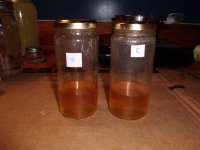 CIMG1757.JPG1.3 MB · Views: 1
CIMG1757.JPG1.3 MB · Views: 1 -
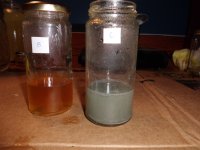 CIMG1759.JPG1.5 MB · Views: 1
CIMG1759.JPG1.5 MB · Views: 1 -
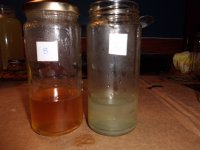 CIMG1761.JPG1.1 MB · Views: 1
CIMG1761.JPG1.1 MB · Views: 1 -
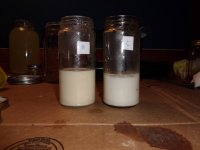 CIMG1763.JPG1,008.7 KB · Views: 1
CIMG1763.JPG1,008.7 KB · Views: 1 -
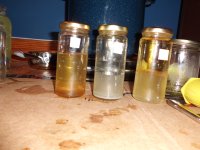 CIMG1773.JPG1.3 MB · Views: 1
CIMG1773.JPG1.3 MB · Views: 1 -
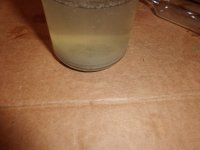 CIMG1778.JPG1.3 MB · Views: 1
CIMG1778.JPG1.3 MB · Views: 1 -
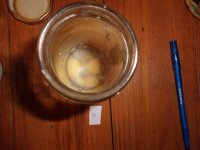 CIMG1783.JPG1.2 MB · Views: 1
CIMG1783.JPG1.2 MB · Views: 1 -
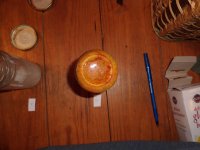 CIMG1785.JPG1.3 MB · Views: 1
CIMG1785.JPG1.3 MB · Views: 1 -
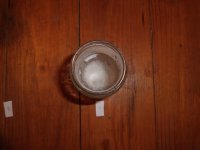 CIMG1787.JPG1,019.5 KB · Views: 1
CIMG1787.JPG1,019.5 KB · Views: 1 -
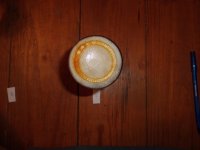 CIMG1790.JPG955.5 KB · Views: 1
CIMG1790.JPG955.5 KB · Views: 1 -
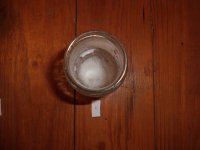 CIMG1789.JPG1.1 MB · Views: 1
CIMG1789.JPG1.1 MB · Views: 1 -
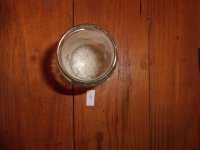 CIMG1792.JPG1.2 MB · Views: 1
CIMG1792.JPG1.2 MB · Views: 1 -
 CIMG1796.JPG951.4 KB · Views: 1
CIMG1796.JPG951.4 KB · Views: 1 -
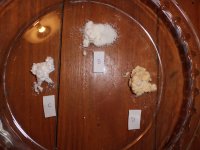 CIMG1798.JPG1.5 MB · Views: 1
CIMG1798.JPG1.5 MB · Views: 1
